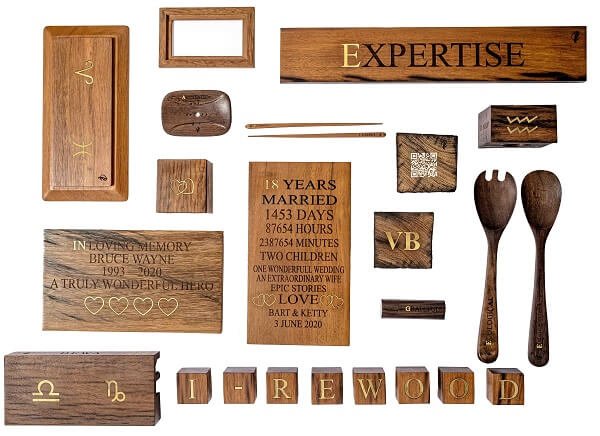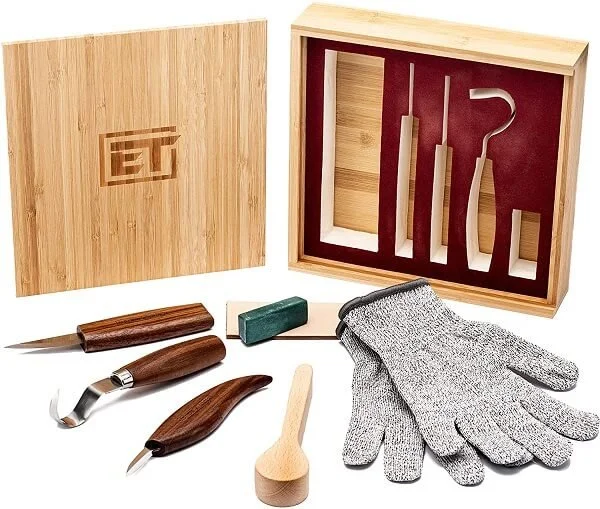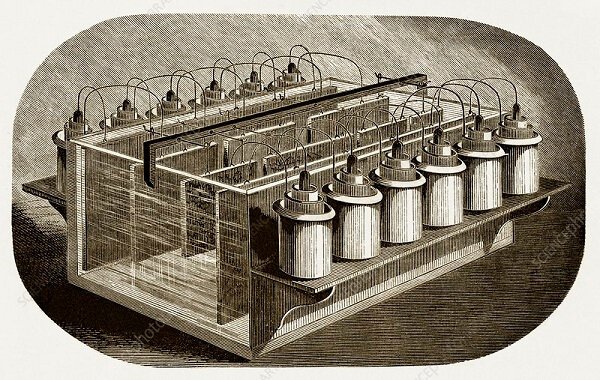While today’s visual communication heavily relies on the likes of Instagram, Facebook or Pinterest, wood engraving was THE thing in the past. And we have come a long way to reach today’s laser engraving perfection.
I-Rewood expertise reclaimed wood engraving
Wood engraving goes back all the way to the 15th century, making it one of the oldest printing techniques. It has evolved toward laser engraving to allow mass production.
Originally, a wood block would be cut and a smoothed plank cut longitudinally from the tree trunk so that the grain runs in parallel lines to the block. Once the design has been established by cutting away the wood around the areas that will be printed, the block is inked with a small roller called a brayer. A couple more steps in between and the block printing would be done by applying a moistened piece of paper and a protective layer on top of the block. Only then would the block be put through the printing press.
Essential Tools Wood Carving Set
Wood engraving blocks are typically made of boxwood or other hardwoods, such as lemonwood or cherry, and are expensive because end-grain wood must be cut from a section through the trunk or large bough of a tree.
Thomas Bewick technique in Great Britain at the end of the 18th century His work differed from earlier woodcuts in two key ways. First, rather than using woodcarving tools such as knives, Bewick used an engraver's burin (graver). With this, he could create thin delicate lines, often creating large dark areas in the composition. Second, wood engraving traditionally uses the wood's end grain—while the older technique used the softer side grain. The resulting increased hardness and durability facilitated more detailed images.
Because the finesse of wood engraving produces a particularly rich tonal range, wood engravings are usually, but by no means exclusively, black and white
Later in the 19th century, wood engraving as a method for reproducing works of art or for illustration was disappearing, replaced by photography. Much quicker and more representative of the reproduced model, it became the way to capture memories.
However, wood engraving never completely disappeared and modern techniques helped to stay around. Indeed, when laser engraving appeared, it completely changed the wood engraving landscape, allowing mass production of items to meet the demand of today’s consumers' needs. This was made possible in the mid-19th century when electrotyping was developed, which could reproduce a wood engraving on metal.
Electrotyping Tank for Woodblocks
Nowadays, with the moving forwards of time and the introduction of laser technology, wood engraving moved from a very time-consuming process toward a process that can be done in a matter of seconds and the size, design, and intricacy know no limits.
This is how something as complicated as a QR code, so popular with restaurant owners to display their menus, can now be done easily.
We take the opportunity of this article to remind our audience that our homeware and homedecor brand I-Rewood offers a 35% discount on all engravings until the 14th of February.





